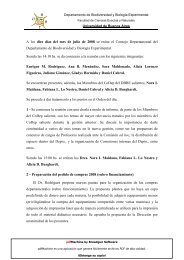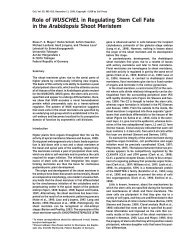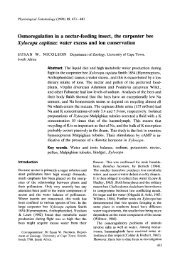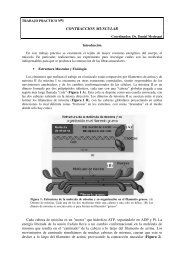The Aerobiology Pathway
The Aerobiology Pathway
The Aerobiology Pathway
Create successful ePaper yourself
Turn your PDF publications into a flip-book with our unique Google optimized e-Paper software.
Figure 2.2<br />
Smoke dispersal from<br />
a chimney in Calcutta,<br />
1997.<br />
and Fitt, 1985; Fitt and McCartney, 1986). However, it also increases dispersal. Last<br />
(1955) showed that when spores were formed in the crop the spore concentration was<br />
always greater within than above the crop, and also near the ground than at the top of<br />
the crop. This is not only due to dispersal but also due to deposition on leaves by the filtering<br />
effect of the crop canopy.<br />
Particle dispersal is largely dependent on air mass movement, turbulence and thermal<br />
convection. Characteristics of particles such as size, shape, density and surface texture<br />
affect dispersal only very subtly, by affecting aerodynamics such as the particle’s terminal<br />
velocity.<br />
Recently, attention to the dispersal of pollen has heightened due to concerns over the<br />
possible spread of genetically modified material. Prior to the development of GM crops, as<br />
now, information on pollen dispersal was important to calculate suitable separation<br />
distances for seed-production crops so that cross-pollination is minimised. For sugar beet,<br />
Chamberlain (1967) suggested that the then recommended minimum spacing of 1000 m<br />
from a 20 acre (8.1 hectare) source to a seed-production plot, would result in the proportion<br />
of cross pollination to within-plot pollination to be 4 x 10 -3 with 1 x 10 -3 pollinated<br />
from the regional background (long distance) pollen. He suggested that increasing the<br />
separation distance to 2000 m would reduce the proportion of cross pollination from the<br />
source area to that of cross pollination from the background pollen. <strong>The</strong> concentration of<br />
pollen or other particles is affected by the height above ground (dispersal from the source).<br />
Hart et al. (1994) described concentrations of grass and nettle pollen trapped using<br />
Burkard traps simultaneously at three heights (12, 24 and 30 m) at Leicester, England.<br />
<strong>The</strong>y found that pollen concentrations were generally (but not always) lower in the 30 m<br />
trap and this was thought to be due to locally produced pollens not mixing enough to<br />
reach 30 m. Peaks of pollen grains trapped were later for the higher traps than the 12m<br />
trap and this could represent pollen production from distant sources rather than local<br />
sources. McCartney and Lacey, M. (1991b) also found a decrease in pollen numbers with<br />
THE AEROBIOLOGY PATHWAY 19


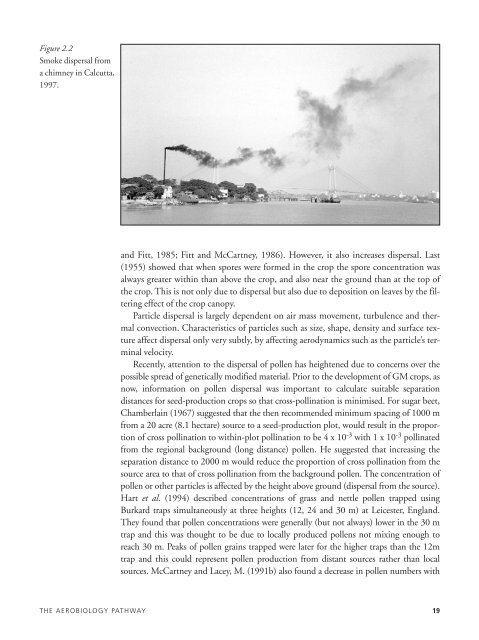

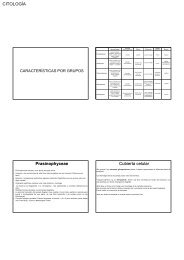


![Estructuras secretoras internas [4.64 MB]](https://img.yumpu.com/14294979/1/190x143/estructuras-secretoras-internas-464-mb.jpg?quality=85)
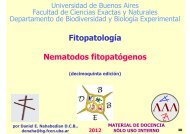
![anatomía y exomorfología [7.14 MB]](https://img.yumpu.com/12744163/1/190x143/anatomia-y-exomorfologia-714-mb.jpg?quality=85)
